On Gold Mountain Read online
Page 44
It was hard for See-bok to think about these things as he lay on the cot in the back room of his new store. It was 1950, and Fong See, at ninety-three, was becoming increasingly disengaged from the world around him. His son Ming had recently married Sunny Rockwell, but Fong See hadn’t gone to the wedding. (He wasn’t invited because he was too old and unpredictable.) Fong See just barely observed the relationship between his sons and his grandson Richard. (That boy had troubles, drinking too much. But he told Chuen, “It’s better to have bad friends than no friends.”) His daughter Jong Oy had moved away, first back East, then to Taiwan, after marrying one of Chiang Kaishek’s officers. She had met the boy when he’d come over as a trainee. See-bok had already picked out the son of a businessman for her to marry, but she’d insisted on marrying this military man. Fong See had been too old, too weak, to prevent this. Now he supposed he’d never see her again.
Remember me, he thought.
He had always kept control over his family in China, but now he was an old man, powerless and ineffectual, totally isolated from his home village. Since he’d married Ngon Hung, all of his work had been geared toward leaving Los Angeles and going back to China, but just when he would have gone home to retire, his home country had thwarted him. He tried to look back and see what he could have done differently.
He thought back to the Japanese invasion. The Fatsan Grand Hotel had been conscripted by the Japanese to use as their headquarters. In the home village of Dimtao, his fourth wife, Si Ping, whom he had married in the 1920s, had done all right. They had never had children, and she had one hundred mou of land to sustain her. But Uncle’s concubine, Lui Ngan Fa, and her three children had suffered greatly. With only six mou among them, they had been reduced to simple meals of jook or cabbage rice. Yet people said that no one left empty-handed when they went to her for money or food. No one realized then that Lui Ngan Fa’s acts of generosity when others had nothing to eat but boiled bark would serve her well in the coming dark years.
When the world war ended, Fong See had gone back to China and seen with his own eyes how furniture had been destroyed, how his house had been torn asunder, how his land had languished. The manager of the hotel claimed that only three hundred U.S. dollars was left in the account. It was reported that Fong See had said, “This is evidence of the cruel act of Imperialist invaders. With this three hundred dollars, I might as well invite all my relatives and friends to a meal.” Maybe he’d said that, maybe not. He couldn’t remember exactly.
For a few brief years, Ngon Hung’s mother, the business-minded Fong Guai King, had once again taken over the hotel. But this, too, was temporary. As soon as the Japanese were vanquished, the Generalissimo and Mao went right back to their civil war. In 1949, using the same guerrilla tactics they had used against the Japanese, Mao’s troops drove Chiang Kaishek off the mainland to the island of Taiwan. Soon after, the Communist high command claimed victory and rode into Peking to take up residence at the Forbidden Palace. In South China, lesser troops took over the Fatsan Grand Hotel to use as that city’s Communist Commission Office. Fong See’s town house behind the hotel was razed, with no apology or money paid for the insult. But this was not all! He sent six thousand U.S. dollars to Fong Guai King—not for her, she was too old, nor for Si Ping, his wife here would not allow it—but to help his young cousins and nephews leave China.
Fong See wasn’t the only one to do this; all through Chinatown, people scrambled to send money back, hoping to get mothers and brothers and cousins and wives out before the Bamboo Curtain came down. When China first closed, families sent “tea money” back to relatives left behind in home villages. But now the risk was too great. In villages and cities across China, retributions were carried out against citizens reputed to have Imperialist relatives in the West. In American Chinatowns, since the outbreak of the Korean War in 1950, the politically powerful Six Companies—the federation of benevolent societies representing districts and counties in China—had mounted virulent anti-Communist campaigns. Spies were allegedly everywhere, and willing to report citizens sympathetic to the Communist regime. In addition to the fear of retribution that Chinese Americans faced from within their own communities, there was the apprehension about Caucasians that had continued unabated since the days of the railroad.
With the Korean War, Americans were also in the grip of anti-Chinese, anti-Communist propaganda. Chinese students and scholars from the People’s Republic of China attending schools in the United States were barred from returning home. With the detention of Japanese American citizens still fresh in everyone’s mind, there was widespread fear that now Chinese American citizens might face the same fate. (The passage of the McCarran Internal Security Act of 1950, which provided for the internment of Communists during a national emergency, certainly didn’t help to quell these anxieties.) All these factors combined to produce a decline in the remittances sent to relatives in China from $7 million in 1948 to just $600,000 a year later. Now, in 1950, very little “tea money” left the United States for China.
Fong Guai King received the money, but gossips informed on her. She did her best to hide it, even giving some to Lui Ngan Fa to spirit away from inquisitive eyes. But while the Fong family had been able to slip through all the changes that had happened in China in the past, this time they were destined to be victims. Fong Guai King—her feet still bound, her hands still smooth and soft—was dragged to the village square, where she was forced to kneel in broken glass while new village Communists came forward to denounce her.
“She treated us badly.”
“She was a bad woman, always selfish.”
“She was rich, always taking fifty percent of the profits from the Fatsan Grand Hotel.”
“She never thought of the villagers.”
“She never worked hard. Look at her hands and you will see.”
“She is one of the worst of the bad class.”
On and on they went until Fong Guai King confessed, and no nephews or cousins were able to escape.
Though a terrible loss of face, this was just a preface to what would come. Because Fong See owned over one hundred mou of land, he was classified as an evil landlord. Still, the old-timers of Dimtao remembered Gold Mountain See’s good deeds and therefore treated Si Ping well when she was detained. They remembered how she had financed the Arts and Handicrafts Fair every year on the seventh day of the seventh month. They remembered how women and young people from the ninety-six villages of Nam Hoi county had always come to enjoy the popular event. Only the farmers from rival villages were cruel to Fong See’s fourth wife, occasionally beating and cursing her. Not too badly, it was reported. For a time, Uncle’s wife escaped these torments. “She was always kind and humble,” the villagers recalled. But eventually she was hit on the head and made to confess that she had hidden the money for Guai King.
The Communists were evil, or at least that’s what most people were saying. But it was hard to tell. Many in Chinatown had forgotten what China was like: starvation, drought, pestilence, no opportunities. When Mao said, “Everybody works so everybody eats,” Fong See, who may have been considered a landlord but had grown up as a peasant, recognized the irrefutable logic to those words. When relatives wrote that daughters of not very well-to-do families were being recruited to become orthodontists, doctors, and engineers, it was another sign—a woman could be something more than just a servant. But no one wanted to say these things aloud.
Americans were confused by all this. After so many years of “Free China” campaigns, the Communist takeover of China, followed by the outbreak of the Korean War, came as a surprise and a blow. Just as party loyalists wanted someone to take the blame in China, so too did Americans want someone to take the blame for the loss of China. Harking back to the last century, when the railroad was completed and the specter of yellow hordes petrified the Caucasian populace, once again politicians—with Senator Joseph McCarthy just beginning his anti-Communist campaign—dredged up familiar fears.
But while red-baiting demagogues and their minions ruined reputations, careers, and lives, some senators were passing special bills to bring in individual Chinese people who’d been caught in China when the Bamboo Curtain came down. This had happened to Woo Nguey, the wife of the owner of the Chungking Produce Company in Los Angeles, who got stuck in China during a visit. Senator Richard Nixon came to the family’s aid, passing a special bill so that she could immigrate. To celebrate Mrs. Woo’s return, the family sent the senator a crate of china, which he returned to them with a note saying that it was “wrong to accept a gift for doing right.” In this way, the Woo family became convinced that Senator Nixon was an honest man.
Fong See had witnessed many changes in his home country during his lifetime—the fall of the Manchus, the Boxer Rebellion, the reign of the warlords, the rise and fall of Chiang Kaishek. Through all of these struggles, he’d never wavered in his belief that he would one day return to China to live out his final days. This time, however, he knew he was too old to outlast the new regime. For Fong See, who had sent money back to China for seventy years, investing and buying property, this turn of events meant that not only had his family lost most of its land wealth to the Communists, but that he would never be able to follow the old proverb that said, “The fallen leaves return to the root.” Lying on the cot in the back room of his new store, Fong See knew he would never be able to return to the home village, recline in his rooftop pavilion, and listen to Enrico Caruso on the Victrola. Fong See would never be buried in his homeland.
CHAPTER 19
ANOTHER MARRIAGE
1951–57
ON February 7, 1951, bulldozers, cranes, and steam shovels rolled down Los Angeles Street and began demolishing the nineteen buildings that made up the last block of Old Chinatown, including Jerry’s Joynt, Soochow, the Kong Chow Temple, the Sam Sing Butcher Shop, the F. See On Company, and the F. Suie One Company. Debris and discarded furniture lay beneath piles of brick and shattered siding. The Lugo House, built in the days of hand-wrought square nails, was ripped apart. In structures not quite leveled, pipes and loose wires dangled. Below ground, passages and basements that had once offered a means of escape from police raids were crushed.
C. G. Byson, who was contracted to wreck the block for a cost of $16,794, personally inspected each broken wall, hoping to find hidden treasure. Instead he found lottery markers, piles of rags and waste paper, and forgotten camphor chests—the Gold Mountain chests of old, packed with quilted jackets, soap, and papers. Richard and Eddy also sifted through the ruins, collecting those hand-wrought nails and picking up shards of Chinese porcelain, ginger jars, and medicinal bottles. Richard found pieces of clothing—shirts with detachable collars—that he added to his wardrobe. Eddy appropriated granite cobblestones and curbstones for the garden on Lantana.
This demolition meant major changes for the family. The Sees moved the F. Suie One Company over to Ord Street, into one of the last remaining buildings of China City. The Foo dogs that had flanked the entrance to the old store and, before that, the entrance to Dragon’s Den, now guarded China City’s old moon gate, which led into the courtyard of the F. Suie One Company. Inside, the family converted each kiosk and cubbyhole into specialized rooms for merchandise. The central aisle, which had once seen rickshaws loaded with gawking tourists, now became the display area for furniture and knickknacks.
Just to the left, inside the entrance, was the bronze room. Next came the art room, which held the priceless pieces. In this room, Ming invited special customers to sit around a rosewood barrel table on little pie shaped stools. “I have such a treasure to show you,” he’d say, then slowly bring out his collection of rose quartz. Just past the art room was the porcelain room, followed by a small alcove with an eight-foot carved Shiva. At the back were glassed-in offices for Sissee and Ming, and a large shop area for restorations and custom work. On the right, coming back along the aisle toward the front, was the scroll room, followed by the embroidery room. Next came a vestibule leading to another warehouse area, and an elevator shaft that went to an upstairs workshop.
Finally, behind Eddy’s jewelry table at the right of the entrance was the true “back,” that area where the family hung out. It was in the back that Stella worked on that confounded coromandel screen and did other restorations. Here the family heated up noodles, nibbled on char siu sandwiches on sourdough bread, brought in tea cakes, or picked up french dip sandwiches from Philippe’s, across the street. In the late afternoons the family entertained their friends, and had a glass of “something stronger” before heading home.
The family would stay in this store on Ord Street for the next thirty years. Business would change. Rentals to movie companies would gradually be superseded by rentals to television productions, and back again. With China closed, the Sees looked to other sources for merchandise. Old customers—some of them major collectors—would come in, wishing to sell. Grace Nicholson, who had learned about Asian art from Fong See when they were neighbors out in Pasadena in the teens and twenties, sold her Chinese antiques to the F. See On and F. Suie One companies when the trend seemed to ebb. When the Bernheimers—famous in Los Angeles for their Japanese gardens—decided to hold an auction to liquidate their estate, Ming, Eddy, and Richard attended to buy large bronzes and big stone pieces. The most spectacular purchase was a nineteenth-century freestanding Chinese conjugal bed designed for a house where all the relatives—aunts, uncles, in-laws, and children—lived together. In China the bed had served as private quarters—with an anteroom, then the bed itself—encased in panels of boxwood, fruitwood, and rosewood. In Los Angeles the bed became a playroom for the See grandchildren and great-grandchildren who came to visit the store.
Fong See, now in his late nineties, found all this change strange indeed. In his new shop in New Chinatown, he felt removed from everything and everyone he knew. Old Chinatown had been conservative and stuck in the old ways. New Chinatown was just the opposite—new, modern, all junk. It shocked him. His new neighbors seemed like strangers, and he felt too old to start new friendships. His children sensed his withdrawal. They seemed liberated somehow, and were always off skiing or some other foolish thing.
Just as Sissee took her mother up to Oregon for one last visit, Chuen now took his father to Sacramento. That Chinatown was completely gone now. They looked for the brewery where Fong See had worked as a teenager. He remembered the way, telling Chuen how he had walked five or ten miles a day just to get there. The brewery was long gone, too. The people—his landlord, the rancher, his neighbors, the man who had helped him import his first curios—were all dead.
Fong See slowly gave up. All the timeworn sayings honoring old age—“Your good fortune is like the eastern sea,” “your longevity is as great as the south mountain,” “may you have this same day every year”—didn’t mean much to him now. He would spend his last days in the F. See On Company, performing for customers, telling far-fetched stories in his put-on pidgin English as he always had. He would spend his nights in the downstairs room behind the store—too sick, too tired, to walk up the flight of stairs to the family apartment.
As Fong See was coming to the end of his life, his grandson Richard was taking a few tentative steps into adulthood. To his Chinese pals, Richard seemed outspoken. He appeared strong. He drank boilermakers and made fun of his cousins and half-uncles when they couldn’t hold down a beer. He would walk in with a stolen street sign or a light from the railroad yards, and blithely say, “Look what I got.” If a guy was worrying about whether or not he should ask out a white girl or a Mexican girl, Richard would say, “Go after her.” Since he’d spent two years at City College, he was meeting people who’d been to war, people who went out of their way to be different instead of conforming. He had conscientiously developed an “exotic persona”—a little bit beatnik, a touch of Chinese, and a tad swashbuckling in his attitudes, dress, and speech. To his friends and relatives in Chinatown, Richard seemed very Caucasian. He seemed as if he knew
what was up, what was cool in the world outside Chinatown.
But Richard knew little more than his cousins and half-uncles. This boy who talked with so much bravado about taking out white girls had only been on two real “dates” in his life, both of them in junior high school. (He still had a crush on Sumoy, but that certainly wasn’t going to go anywhere.) Now, like countless Chinese bachelors before him, he wanted to find out about “normal” American life; he wanted to find out about girls. But to Richard, dating seemed artificial: dressing up, going to the movies or a dance, trying to talk to someone you didn’t know. It wasn’t natural, but he’d turned twenty and knew he had to try.
Richard heard about a writer who had said that the only reason he wrote was to meet girls, not for marriage or sex, but just to learn how to deal with girls. In 1951, taking this advice to heart, Richard wrote a play and decided he would try to get it produced at John Marshall High, his old school. He knew that drama kids were a little off the wall. He also knew that the girls wouldn’t be total dogs. Once he got to the drama department, he saw that all the girls looked basically alike in their angora sweaters, detachable Peter Pan collars, and straight skirts. He found that he physically loved the smell of greasepaint, so he was attracted to Carolyn Laws, who wore pancake makeup to cover a birthmark on her right cheek. She had light brown hair that curled delicately around her face, deep brown eyes, and an engaging smile, and she liked to laugh.
Carolyn had a wildly “American” family. In 1853, Carolyn’s greatgrandfather, George Washington Laws, had left Tennessee and become a pioneer farmer near Dallas. Her paternal grandmother was a Bowlin, descended from Sir John Bowlin, who was one of the earliest settlers in Virginia and who had supposedly married the daughter of John Rolfe and Pocahontas. (Carolyn said she didn’t believe it.) The Bowlins, having lost almost everything in the Civil War, had made their way southwest to the Grapevine Prairie between Dallas and Fort Worth. Carolyn’s father, George Laws, had grown up in Texas, then moved to Los Angeles to become a newspaperman. It was there that George met Kate Sullivan, who could trace her family back to New York State before the Revolutionary War. They fell in love and got married. Then the Depression hit and Carolyn was born.

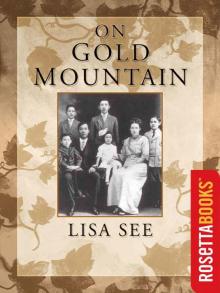 On Gold Mountain: The One-Hundred-Year Odyssey of My Chinese-American Family
On Gold Mountain: The One-Hundred-Year Odyssey of My Chinese-American Family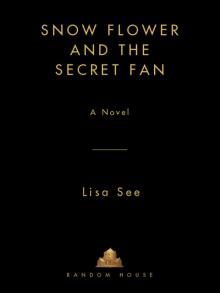 Snow Flower and the Secret Fan
Snow Flower and the Secret Fan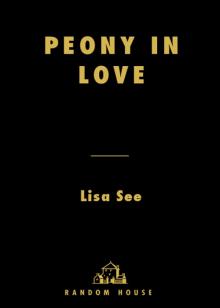 Peony in Love
Peony in Love Flower Net
Flower Net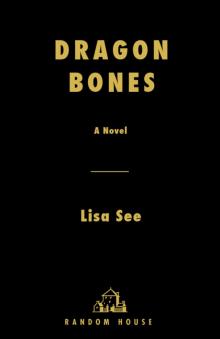 Dragon Bones
Dragon Bones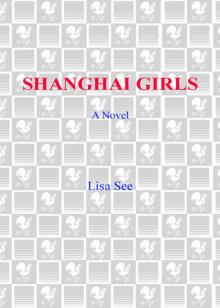 Shanghai Girls
Shanghai Girls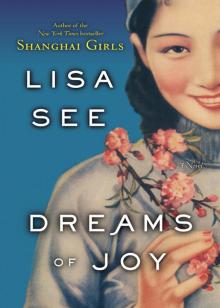 Dreams of Joy
Dreams of Joy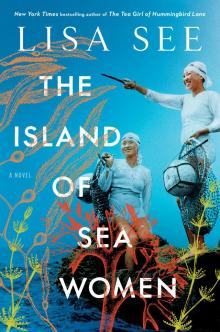 The Island of Sea Women
The Island of Sea Women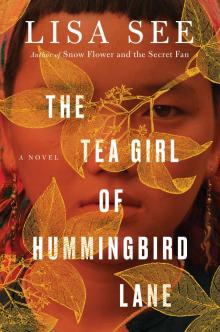 The Tea Girl of Hummingbird Lane
The Tea Girl of Hummingbird Lane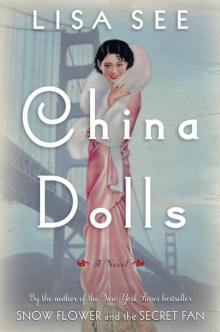 China Dolls
China Dolls The Interior
The Interior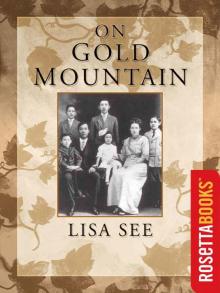 On Gold Mountain
On Gold Mountain